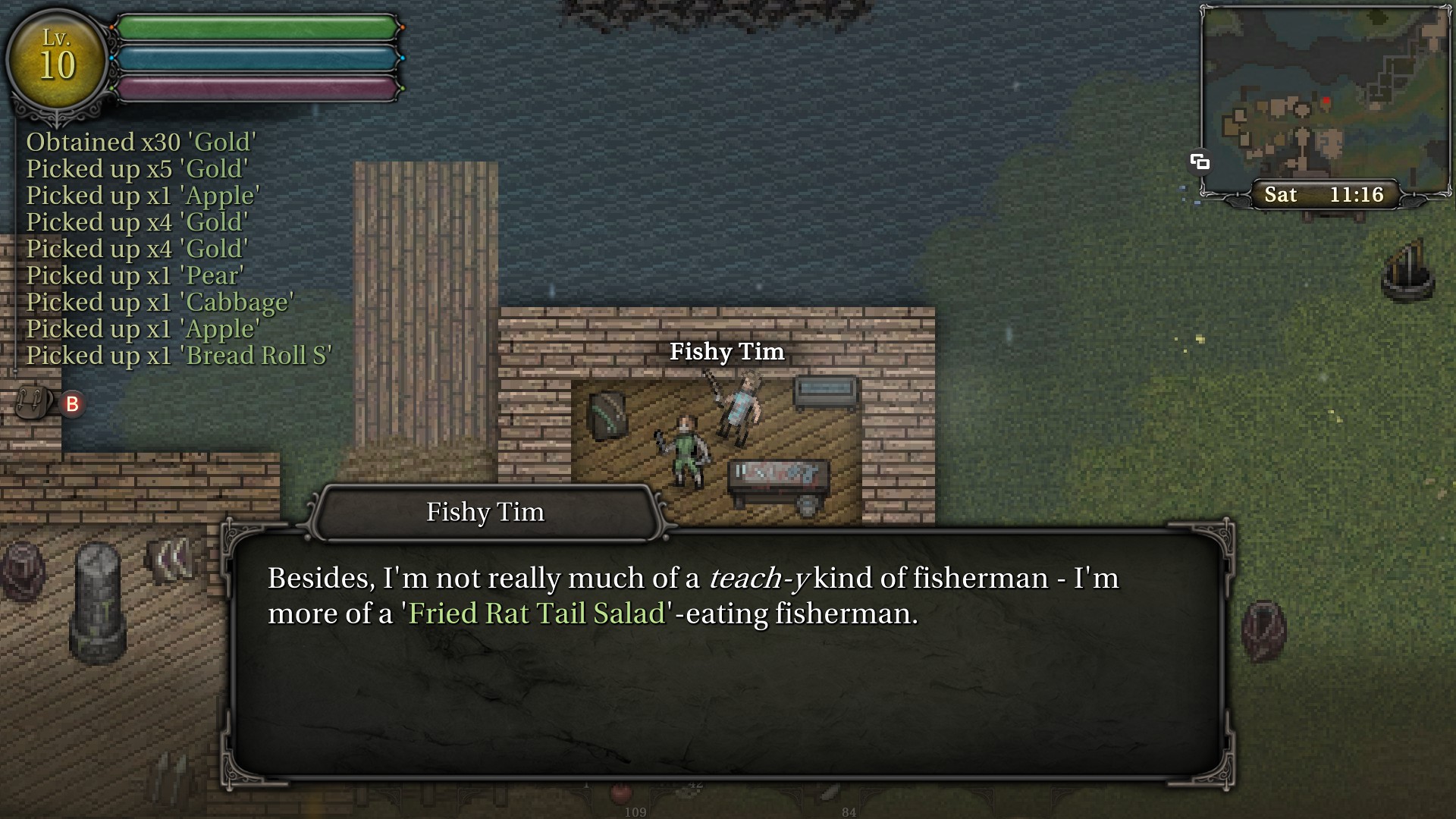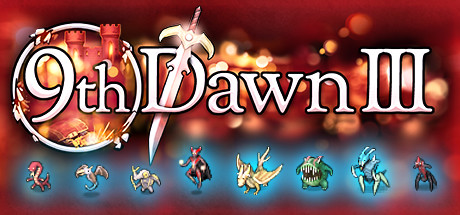There seems to be a decent foundation for this dungeon-crawler, but certain mechanics are more tedious than enjoyable, which substantially drags it down.
Type: Single-Player, Co-op
Genres: RPG, Dungeoncrawler
Developer: Valorware
Publisher: Valorware
Release Date: 5 October, 2020


First Impressions
My interest in 9th Dawn III (9D) stemmed from how massive the game’s description made it sound, with almost 300 monsters to face off against and around 1,400 unique items to find. There’s also a range of abilities to develop, like cooking and fishing, which could take the edge off fighting and exploring. I wasn’t sure how the local coop mechanic would work, but if I could have a friend join me every so often, that could also make things interesting. Admittedly though, I never heard of this series considering it’s the 3rd game, so did this do something right to catch more attention, or is it more of a fluke and the game’s not that great?
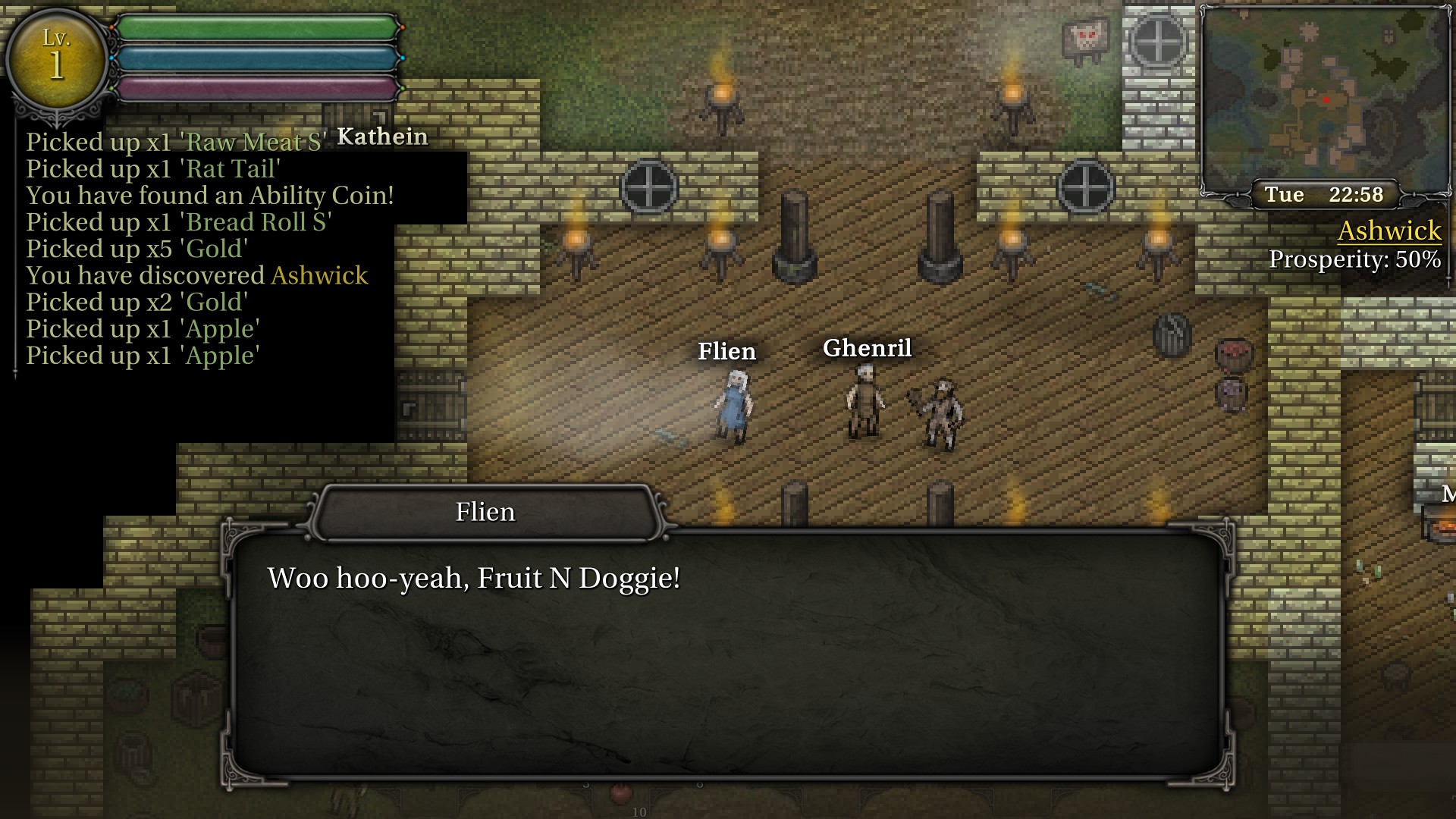
Gameplay
Even though you may not have heard of the 9D games before, if you have experience with multi-hour dungeon crawlers, this should strike some similar notes. Across an otherwise monster-infested land, human settlements are scattered about, with a handful of NPCs in each, some of whom have quests available for you, while others sell wares and buy random junk from you. As you venture out on their behalf, gathering monster remains and other tidbits they want, you’ll suit yourself with the best equipment available and distribute stat points according to the playstyle of your character. There aren’t pre-defined classes to choose between, so you have the freedom to reorient the protagonist as you go. For instance, it’d be a bit hard to sustain an archer early on since arrows are consumable, but when you can afford an inventory of several hundred, it could be useful later on.
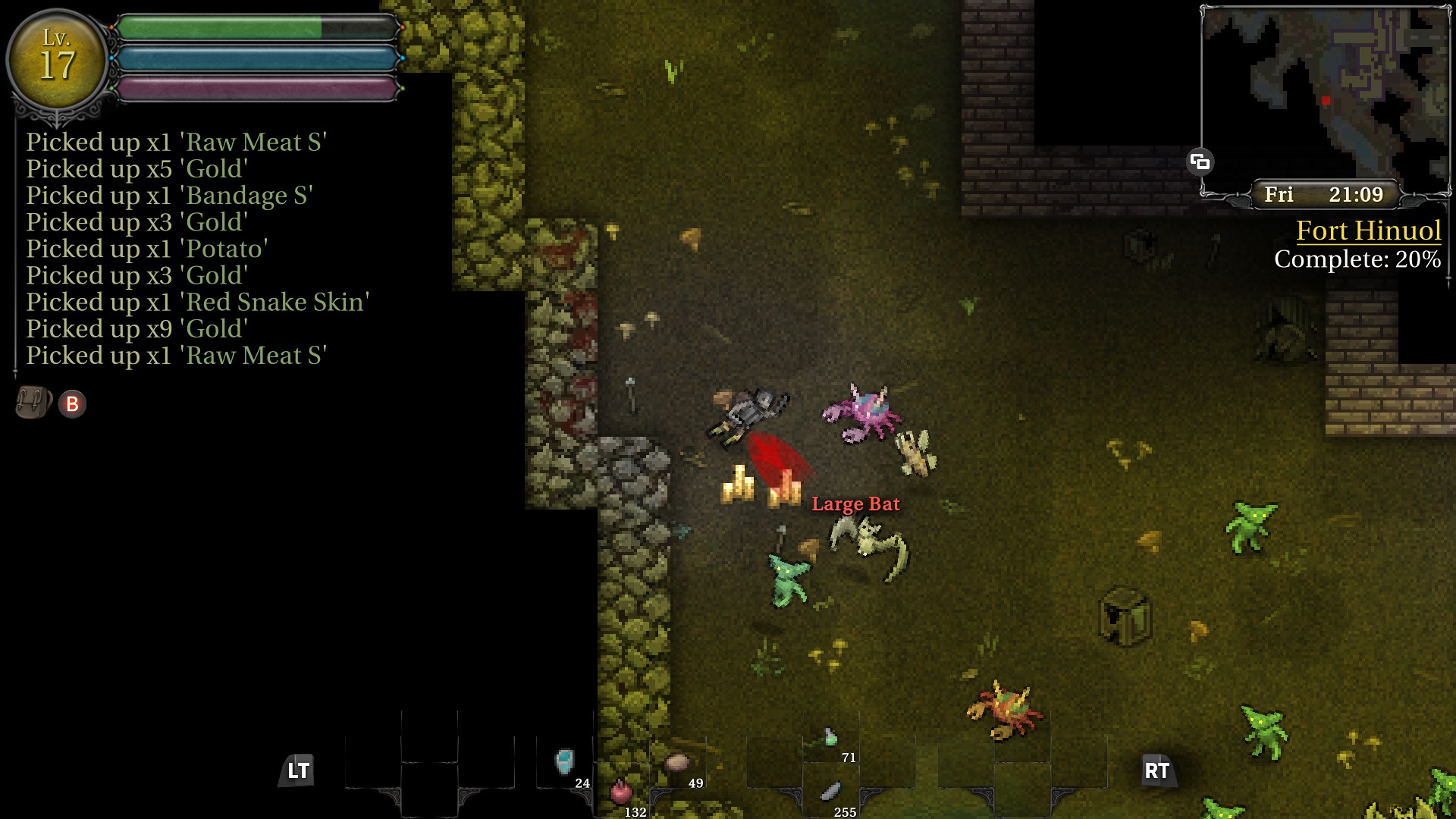
There’s two main areas of focus in 9D. The first stems from completing adventures and clearing dungeons as referenced above, the combat-oriented side of the game. With so many additional mechanics and skills to develop though, these become another integral focus, as you develop abilities such as fishing, capturing and raising monsters, mining, etc. These two provide players the option to switch focus intermittently, with plenty of dungeons and monsters to fight against, but also plenty of alternative mechanics to engage in when that gets a bit stale.
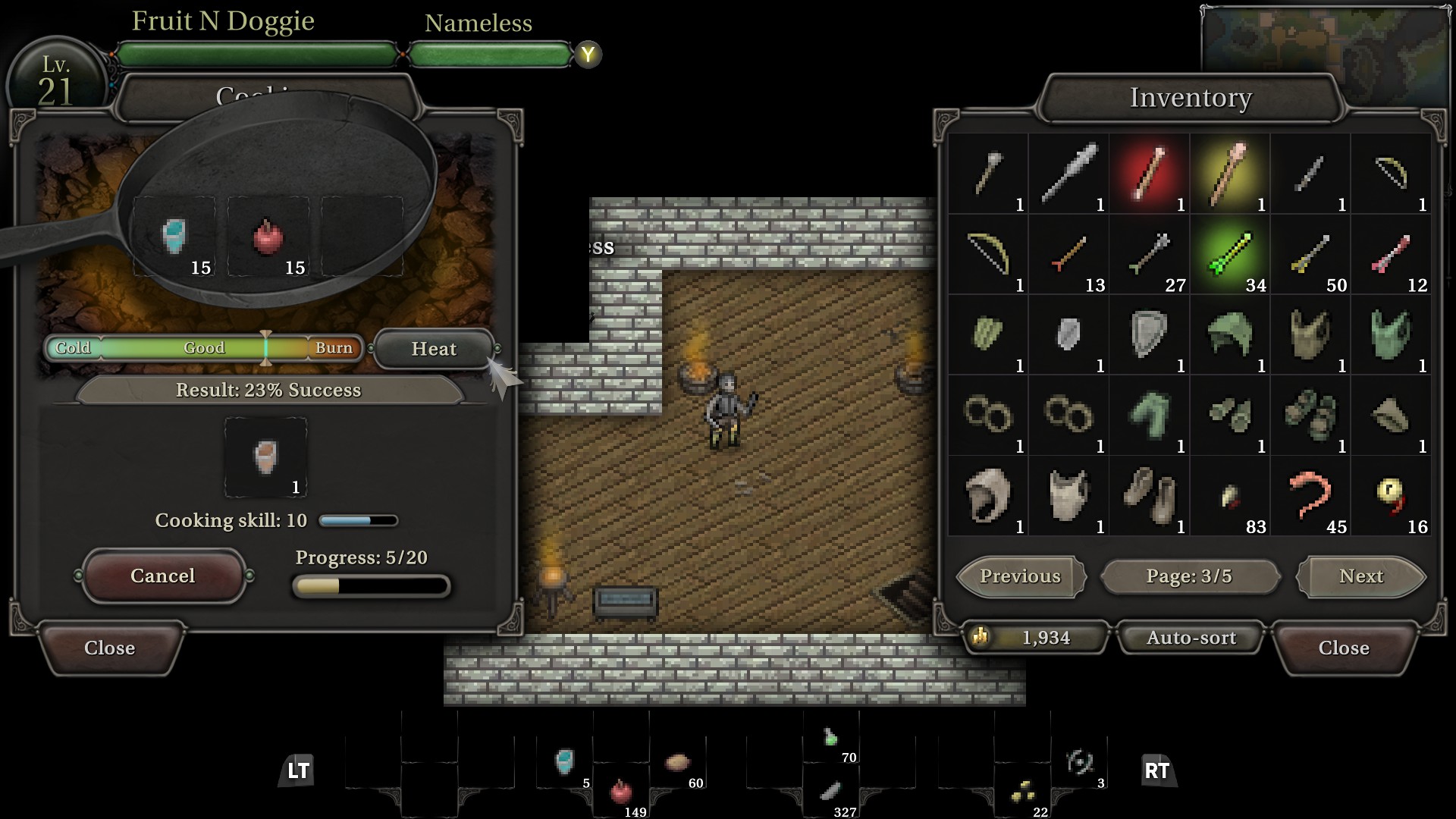
Controls
If playing 9D with a controller, combat works like a twin-stick shooter, as the ‘L joystick’ controls movement, while the ‘R joystick’ activates and aims attacks, whether melee or long-range. ‘A’ interacts with objects and NPCs, ‘Select’ brings up the map, and ‘B’ accesses your inventory. The ‘R’ and ‘L shoulder’ buttons bring up a quick-use inventory, where you can access healing items or whatever else you assign to them. This seemed to be the only way to cast spells you unlock as well. If you’ve found another playable character, you can swap between them with the ‘Y’ button. Some of this is a bit unorthodox, but it works pretty well once you get used to it.
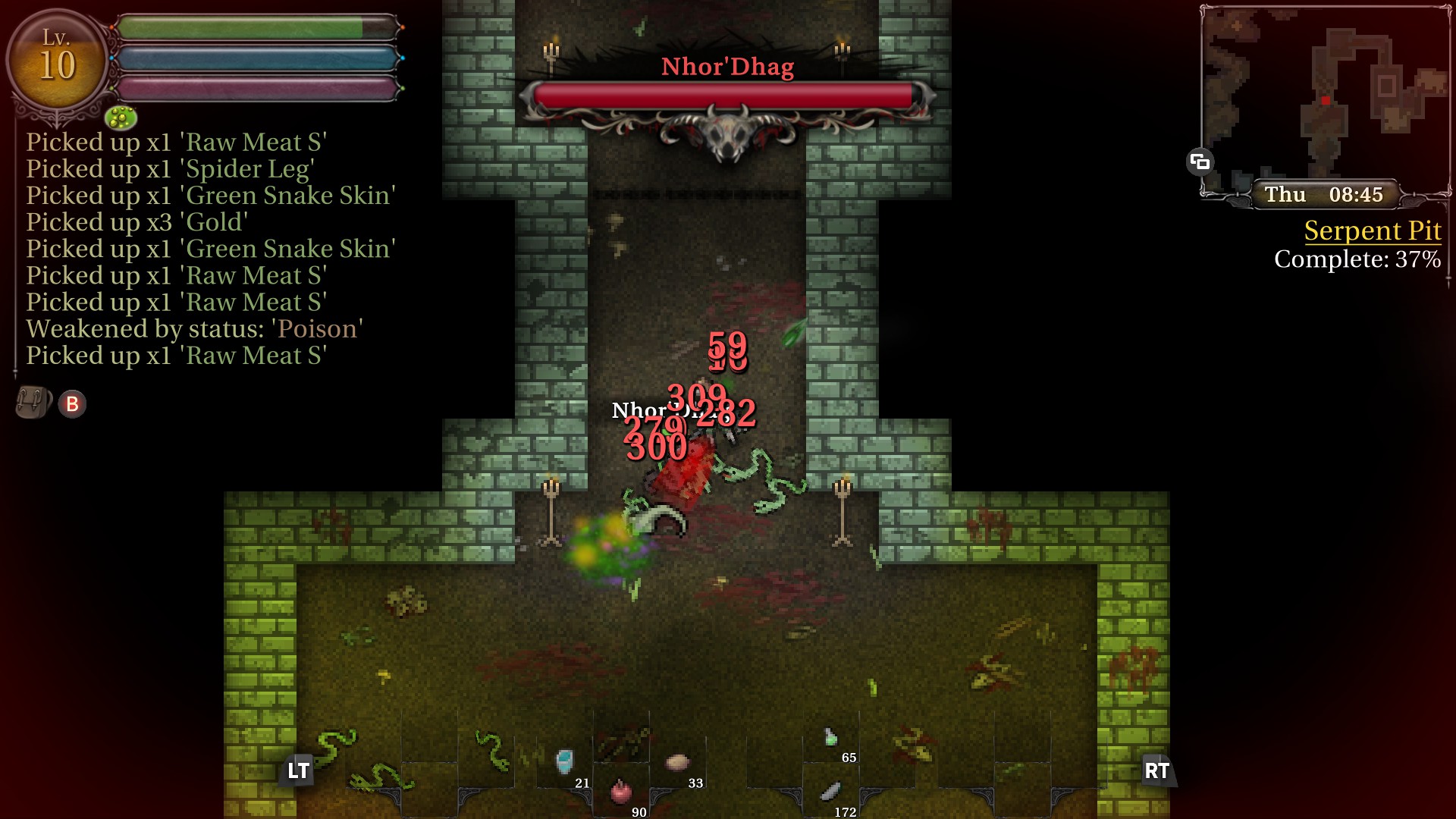
Story
Despite spending almost a dozen hours in 9D, I’ve barely scratched the surface on the story. However, I find that it suffers from a similar issue to open-ended games like Skyrim, in that it’s easy to lose track of the plot. From memory alone, all I recall of it was being told by the village elder to respond to a request from another village, who had a job for me to complete. When looking over the summary from the store page, it references a general story that suits the style as expected, of an evil sweeping over the land, where this unknown protagonist will step up to save the day. Regarding the NPCs and their dialogue, I found it pleasant, as there was enough sense of humor to keep it from being too dry.
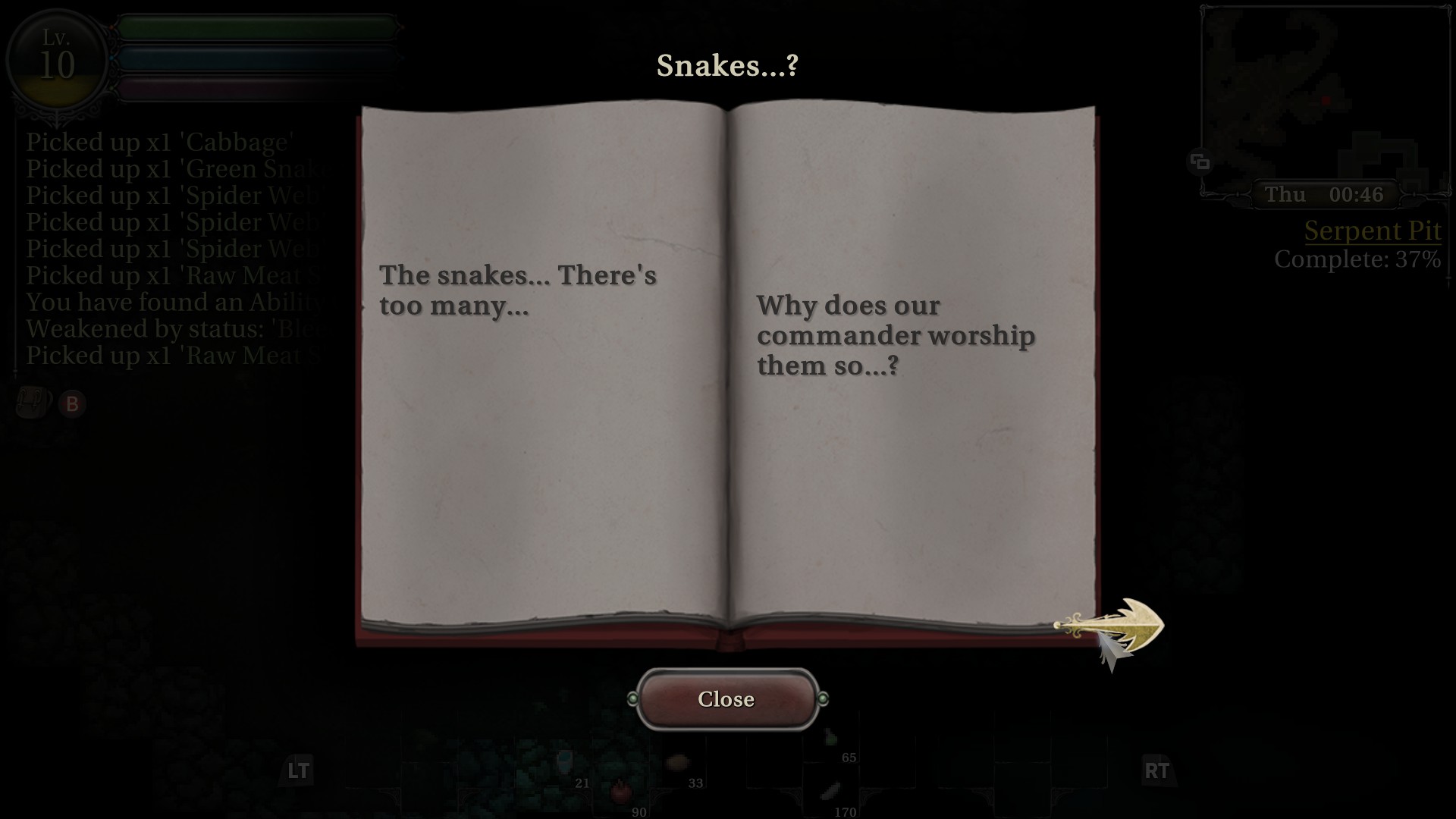
Graphics
One concern I had from the trailer and images was how full the screen looked at times, as it was really disorienting to me, with the use of cutting from one event to another not helping. However, when actually playing the game, it’s not as overwhelming. For one, you’ll get used to your own swarm of allied monsters, at least to an extent. Plus, unless you madly dive into an enemy mob without fear, you’ll pull smaller bunches of them to you at a time, which is more than manageable.
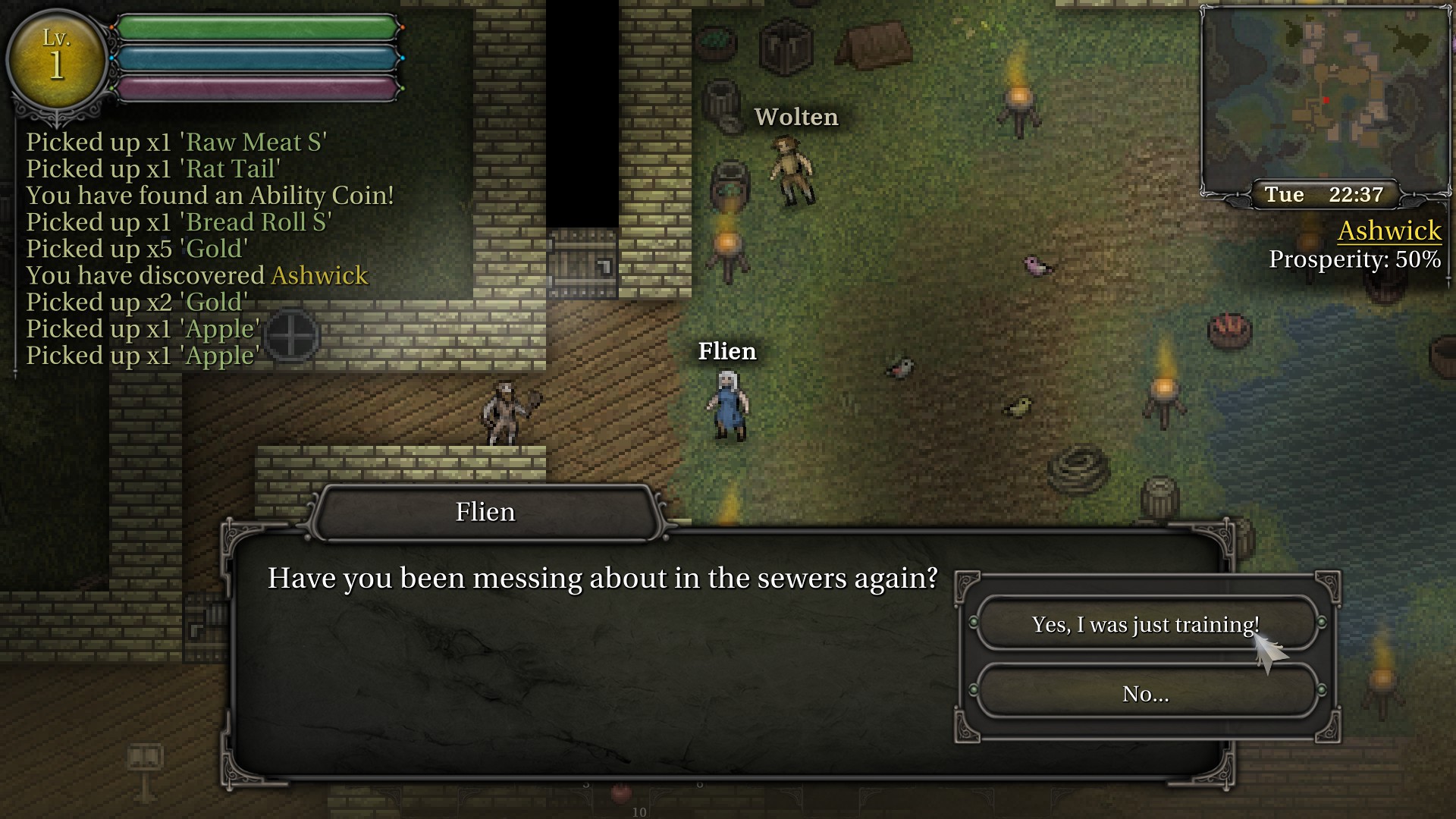
When looking at the graphics specifically, this isn’t a strong point of the 9D games, with even the 3rd one looking basic and rough. The background looks fairly drab with its color scheme, though it does fit a medieval setting well enough. However, the character models and animations are rather ugly and unrefined, and for a game you’d play for so long, it doesn’t do you many favors by giving such lackluster visuals.
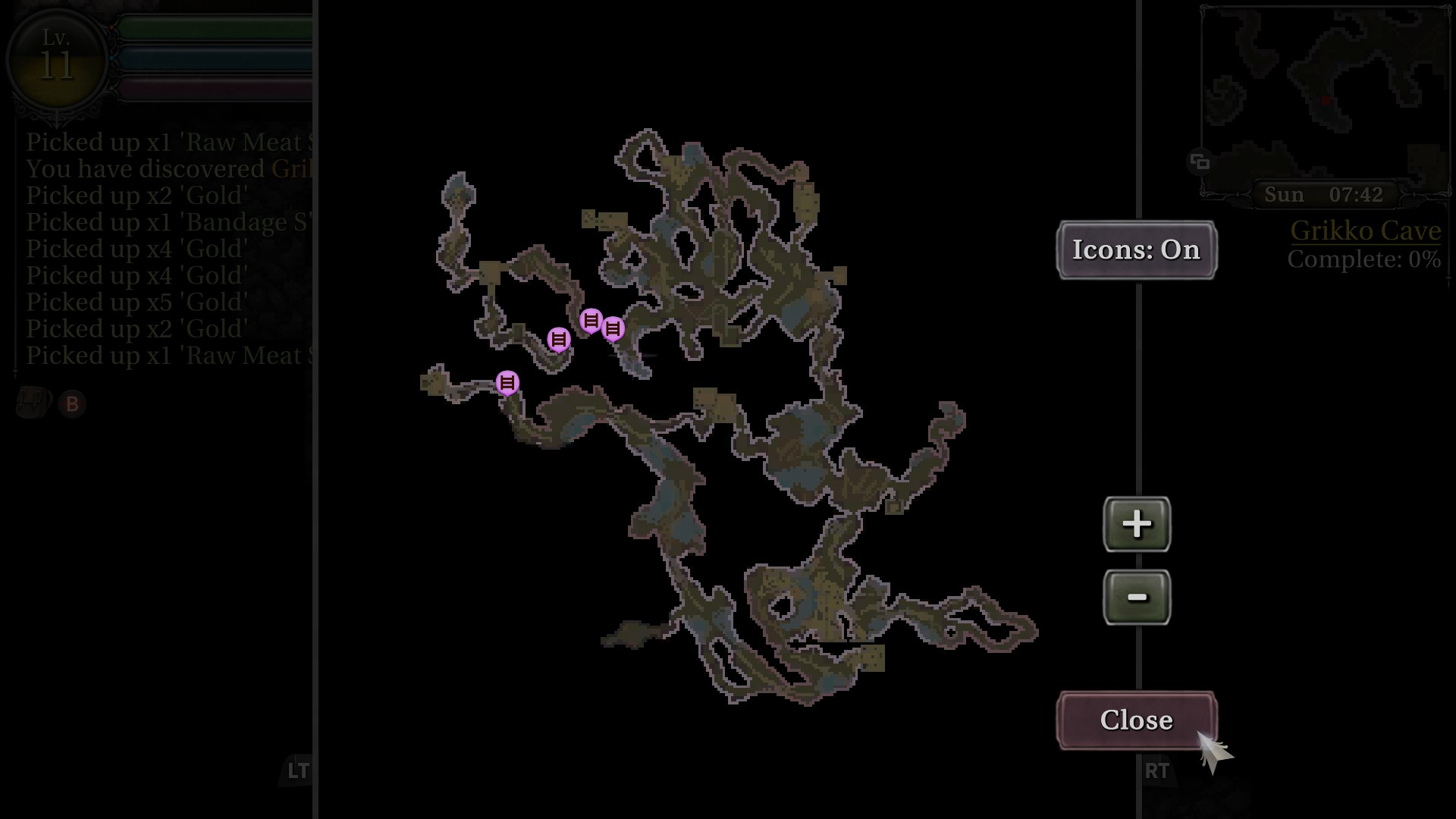
Sound Design
I tried looking for a soundtrack of 9D, but only found a few songs on YouTube. When I intentionally listen to the music, I’d have to say it’s quite a bit better than the graphics, as it makes good use of its instrumentation. The songs sound quite epic, and help build up a mood to get into the adventure. From my time with the game, I don’t recall any ear grating noises or sound effects.
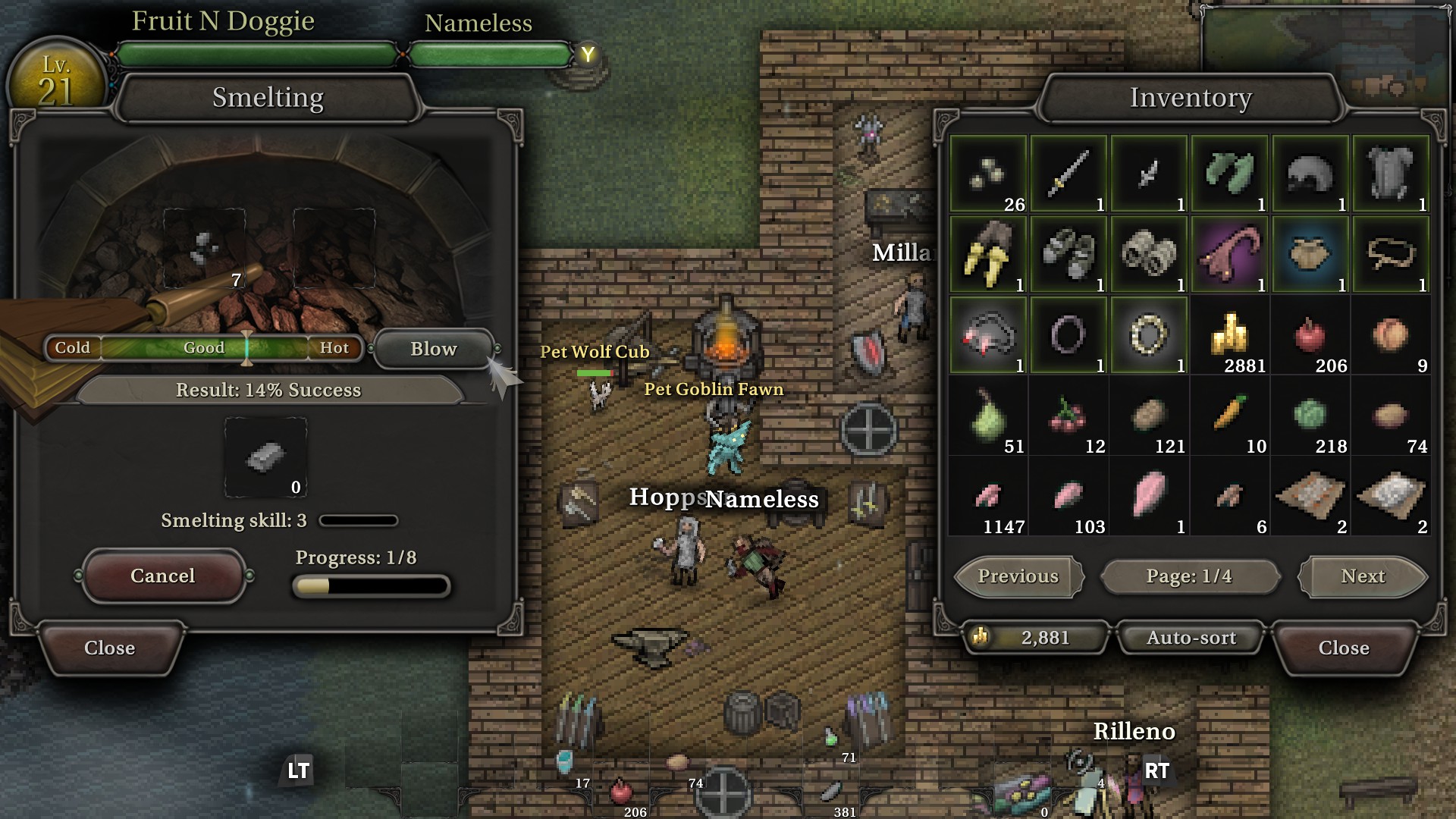
Pros
- There’s a lot to do in the game, with enough bait on the hook to entice gamers to spend time doing it. For instance, the card mini-game lets you take cards from your opponent if you beat them, and there’s a large library of cards to collect. The downside is that there’s almost too much to get distracted by.
- It’s quite satisfying to have a horde of monsters fighting on your behalf.
Cons
- I think too much focus was placed on the sheer amount of content, instead of emphasizing quality and making it enjoyable for the player. For instance, the side activities you can do are incredibly grindy and time consuming, taking several minutes if you do them in bulk. The high failure rate and shared mechanic of keeping an icon on the bar doesn’t invigorate the player in developing the skills of smelting, cooking, alchemy, and weaving. Exploring dungeons also takes a long time, in part due to enemies respawning if you go up or down a floor.
- Even though every dungeon you come across provides you with a full map before you’ve even started exploring, discerning your location and where to go is by no means clear. I’ve had a horrid time trying to fully clear dungeons, even when I was more than strong enough to wipe out all the enemies in the place.
Tips
- Although melee attacks deal a lot of damage, they also require you to be more vulnerable than simply wielding a wand to attack from a distance and casting magic allows for. If I were to start from the beginning again, I’d dual wield a sword/dagger and the starter wand to raise that skill up a few levels so I can use better wands down the line. Then I’d invest into 1 restoration spell and 1 attack spell so they could be worked on over time. I’d make my ally learn a non-regen healing spell, as that effect prevents me from spamming regen for easy experience. Overall, diversity early on is helpful.
- I’d suggest against buying anything until after you complete all the quests for the starting village, as you get better deals with 100% prosperity. Plus, there’s an exploit you can use to make money vie cooking. The dish you’ll want to make eventually is boring veggies, which uses cabbage and water, but you have to level up cooking first. It’ll take a bit of time and grinding, so you might as well explore a few dungeons first to get plenty of ingredients, and bulk make dishes until you’re able to make bulk amounts of boring veggies, which sell for large profits.
- Dying loses a decent amount of XP, so you’ll want to pull back to heal every so often.
Final Thoughts
It’s disappointing for me to say that 9D doesn’t quite deliver for me, as I think it’s got a decent foundation in place, with the better part lying in the dungeon-crawling portion. Even with the combat feeling pretty good, the lack of clearer landmarks and icons on the map makes navigation frustrating, and that can unnecessarily drag out what should be an otherwise routine task of dungeon clearing. However, though in theory I enjoy having so many side tasks to engage with, the mechanics of doing them are very time consuming and horrendously boring. Having to pay attention with something that could be done automatically and instantaneously saps my desire to engage in them. If the non-combat activities were revamped, I could easily see myself spending multiple hours in 9D, but I wouldn’t suggest playing the game as it is now.
